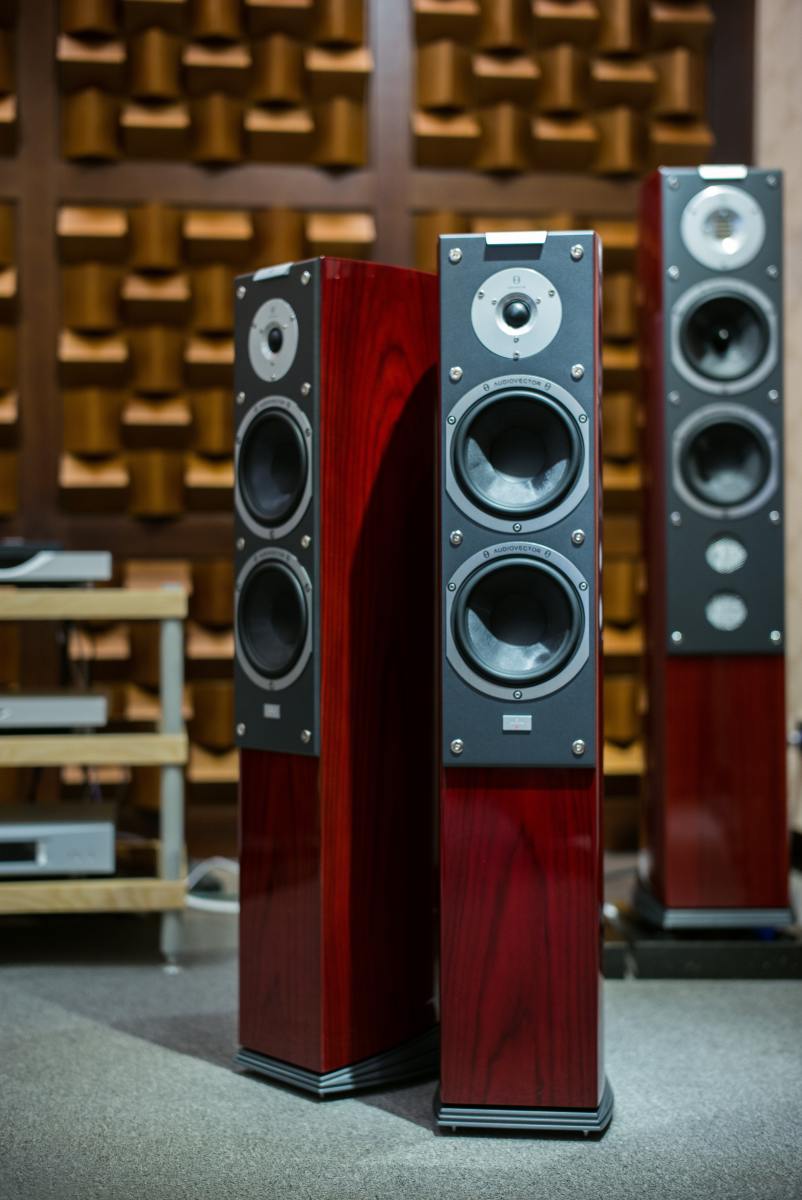Photo by Pixabay As you read this article, you’ll learn how tower speakers will help improve your home theater experience and why it’s important to choose tower speakers over their bookshelf-style counterparts.
Choosing Your First Set of Home Theater Speakers
There are a wide variety of audio devices that make up a home theater system, including center speakers, subwoofers and surround sound speakers. While these items have different uses, it’s important to know what each speaker does before you purchase it—that way you can be sure you get everything you need. Choosing speakers is an important part of building your home theater system, but it’s not as complicated as some people would like to make it seem. The most important thing to keep in mind when purchasing your first set of speakers is making sure they match your other components. You don’t want to buy a new receiver or TV only to find out you don’t have enough power for them! So do yourself a favor and do some research on how much power each component requires before making any purchases. Once you understand how much power your components require, it will be easy for you to choose which speakers will work best with them.
Choosing Your Second Set of Home Theater Speakers
Many home theater speakers rely on towers to deliver high-quality audio. A tower speaker is a tall, vertical speaker that produces sound without a subwoofer. Towers are great for listening to music—but they aren’t typically needed for movie soundtracks, so you may want to consider getting separate bookshelf speakers and a subwoofer instead.
How Do You Connect the Speakers?
There are several ways to connect your speakers, but what you choose will depend on a few factors. The first is whether you have a subwoofer—subs are typically connected to an AV receiver with either speaker wire or by line-level inputs that send a single signal to all channels. But if you don’t have a subwoofer, it’s important to connect your tower speakers and center channel individually because they have their dedicated channels on an A/V receiver. For example, if you connect them using only one cable (like with banana plugs), your system won’t recognize that each speaker has its channel. Instead, it will just think there’s one big left channel. This can cause distortion and make dialogue sound unnatural or hard to hear. You should always use separate cables for each speaker so your system knows where each sound is coming from. If you do want to use banana plugs (which can be easier than running individual wires), make sure you plug them into matching colors on both ends (red into red). It may seem obvious, but mismatching colors could damage your equipment!
Why Buy Tower Speakers?
With good surround sound, you might feel like you’re sitting in an actual movie theater. But there’s one component that helps with immersion more than any other—tower speakers. Placed on either side of your TV, these speakers can provide clear audio across a wide range, even if it seems like your center channel is struggling to convey dialogue and music. If you’ve been thinking about upgrading your home theater but aren’t sure where to start, tower speakers are a great place to begin. They may be all you need for high-quality audio.
Where Should You Position Your Speakers?
When it comes to positioning speakers, it depends on how you want to experience your home theater system. If you want to hear your movie’s dialogue, for example, make sure your center channel speaker is pointed directly at you (aimed at a 15-degree angle). Other speakers—such as subwoofers and towers—should face each other or point toward a wall. This ensures that they won’t overlap with other sounds and muffle them. The same principle applies if you’re trying to create a surround sound experience: The left and right front speakers should be placed directly in front of you; surround sound speakers should be positioned behind you, and rear surround sound speakers should be positioned above or below your seating area.
Final Words on Home Theater Speaker Placement
Placing speakers correctly, once you’ve purchased them, can be complicated. Don’t worry if you aren’t sure how to do it; there are plenty of online resources and books that teach proper placement techniques. The key is that all your work comes together when your system is properly set up. Make sure you have plenty of space between each speaker for optimal quality and don’t forget: If something sounds off-kilter or uneven, switch out your cables! They might not look pretty, but they make a big difference in sound quality. Also, consider mounting your rear speakers on walls (if possible) instead of placing them on stands—you’ll get better sound without sacrificing aesthetics. This content is accurate and true to the best of the author’s knowledge and is not meant to substitute for formal and individualized advice from a qualified professional.
